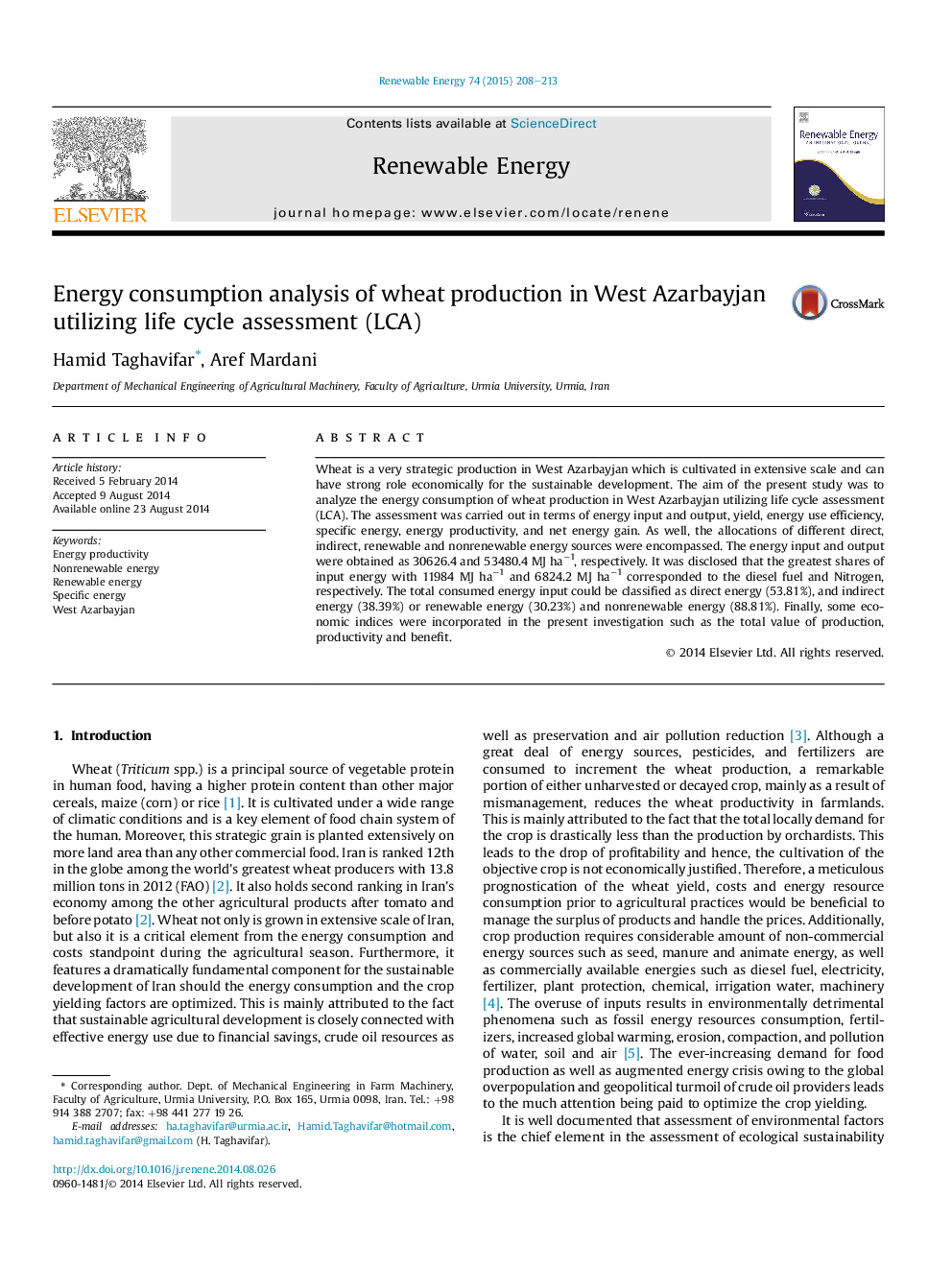| Article ID | Journal | Published Year | Pages | File Type |
|---|---|---|---|---|
| 299969 | Renewable Energy | 2015 | 6 Pages |
•Wheat cultivation is assessed in West Azarbayjan province of Iran.•Chemical fertilizers and Fuel allocate the greatest share among energy inputs.•Direct (53%), indirect (38%) renewable (30%) and nonrenewable energy (88%) were used.
Wheat is a very strategic production in West Azarbayjan which is cultivated in extensive scale and can have strong role economically for the sustainable development. The aim of the present study was to analyze the energy consumption of wheat production in West Azarbayjan utilizing life cycle assessment (LCA). The assessment was carried out in terms of energy input and output, yield, energy use efficiency, specific energy, energy productivity, and net energy gain. As well, the allocations of different direct, indirect, renewable and nonrenewable energy sources were encompassed. The energy input and output were obtained as 30626.4 and 53480.4 MJ ha−1, respectively. It was disclosed that the greatest shares of input energy with 11984 MJ ha−1 and 6824.2 MJ ha−1 corresponded to the diesel fuel and Nitrogen, respectively. The total consumed energy input could be classified as direct energy (53.81%), and indirect energy (38.39%) or renewable energy (30.23%) and nonrenewable energy (88.81%). Finally, some economic indices were incorporated in the present investigation such as the total value of production, productivity and benefit.
